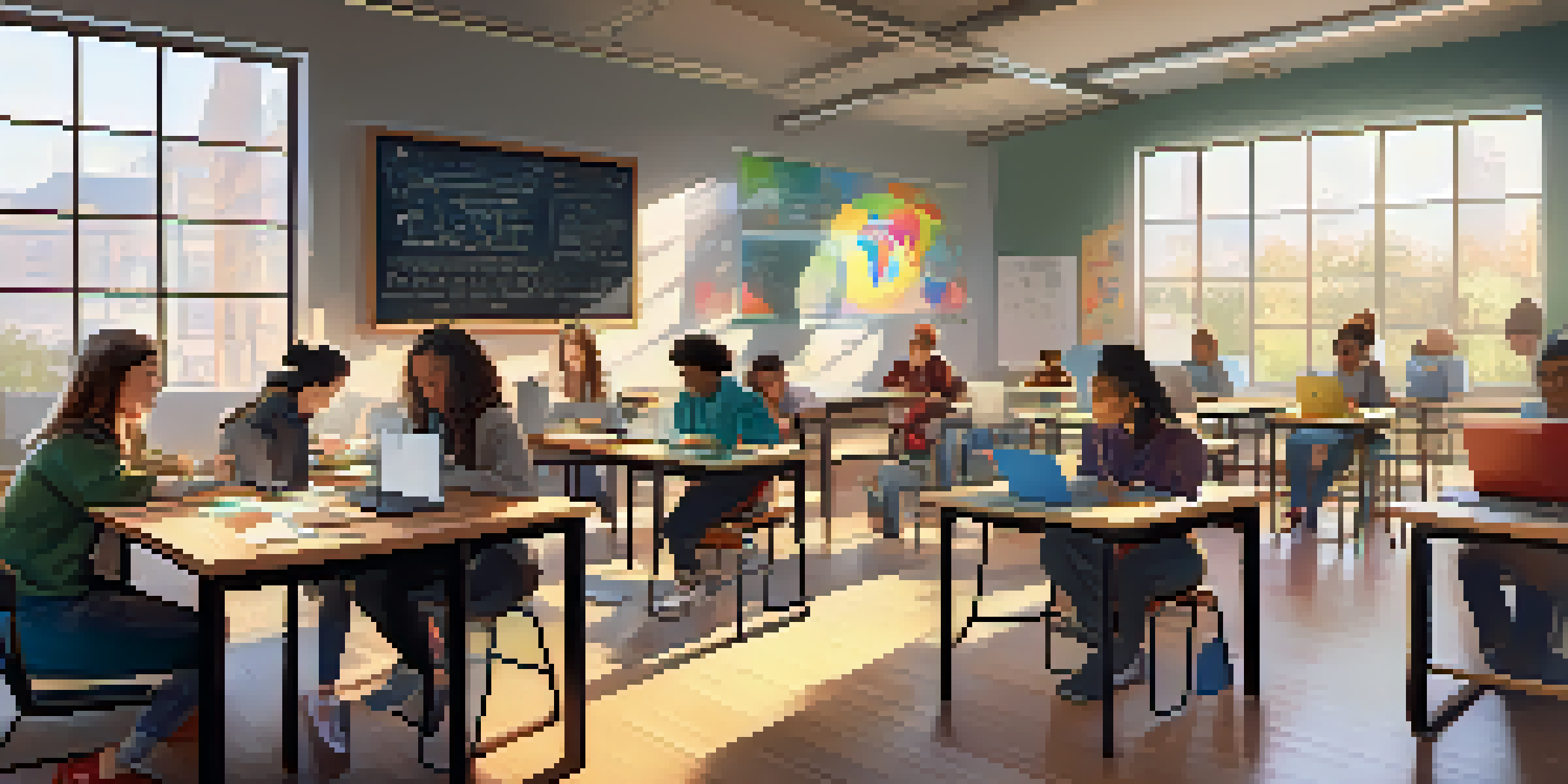Blended Learning: Merging Online and Traditional Education

Understanding Blended Learning: A Definition
Blended learning is an educational approach that combines online digital media with traditional face-to-face classroom methods. This model offers flexibility and personalization, allowing students to learn at their own pace while still receiving guidance from instructors. Essentially, it merges the best of both worlds, leveraging technology to enhance the learning experience.
Blended learning combines the best of both worlds, merging online and traditional methods to create a more effective learning experience.
Think of blended learning like a delicious smoothie: you take the best fruits, which represent online tools and resources, and blend them with yogurt, symbolizing traditional teaching methods. The result is a nutritious and enjoyable drink that caters to different tastes. Similarly, blending these two educational styles provides a unique experience tailored to individual learning preferences.
As education evolves, blended learning is gaining traction in various institutions, from K-12 schools to universities. It’s not just about using technology; it’s about creating a more engaging and effective learning environment that meets the needs of today’s diverse student population.
The Benefits of Blended Learning for Students
One of the key advantages of blended learning is its flexibility. Students can access course materials online, allowing them to study whenever and wherever it suits them best. This adaptability can lead to improved time management skills as students learn to balance their studies with other commitments, like part-time jobs or extracurricular activities.

Moreover, blended learning encourages a more personalized educational experience. With online resources, students can choose the pace at which they engage with the material, revisiting challenging concepts as needed. This self-directed approach often results in deeper understanding and retention of information.
Blended Learning Enhances Flexibility
Students gain the ability to access course materials online, allowing them to study at their own pace and balance other commitments.
Lastly, the integration of technology can foster greater collaboration among students. Online discussion forums and group projects allow learners to connect with peers from diverse backgrounds, enriching their perspectives and enhancing their communication skills. This collaborative spirit is essential in today’s interconnected world.
How Instructors Benefit from Blended Learning
Blended learning not only supports students but also offers significant benefits for instructors. By incorporating online tools, teachers can streamline administrative tasks such as grading and attendance tracking, freeing up more time to focus on teaching. This shift allows educators to be more present and engaged with their students.
The future of education is not just about technology; it's about how we integrate it to create personalized learning experiences.
Additionally, instructors can leverage a variety of resources to enhance their teaching methods. For instance, they can create interactive multimedia presentations or incorporate gamified learning experiences that make lessons more engaging. This variety keeps students interested and motivated, which ultimately leads to better learning outcomes.
Finally, blended learning encourages professional development for educators. As they experiment with new technologies and teaching strategies, instructors can refine their skills and become more adept at meeting the diverse needs of their students. This continuous growth is essential in a rapidly changing educational landscape.
Challenges of Implementing Blended Learning
While blended learning offers numerous benefits, it also presents challenges that institutions must navigate. One of the primary hurdles is ensuring that all students have access to the necessary technology. Disparities in access can create a digital divide, leaving some students at a disadvantage compared to their peers.
Moreover, transitioning to a blended learning model requires significant training and support for both educators and students. Institutions need to invest in professional development programs that equip teachers with the skills to effectively integrate technology into their classrooms. Without proper training, the potential of blended learning may not be fully realized.
Instructors Benefit from Technology
Educators can streamline administrative tasks and engage students more effectively by incorporating various online tools and resources.
Lastly, there’s the concern of maintaining student engagement in a blended environment. While technology can enhance learning, it can also lead to distractions if not managed properly. Educators must find ways to keep students accountable and motivated, ensuring they take full advantage of the blended learning experience.
Creating an Effective Blended Learning Environment
To create a successful blended learning environment, institutions should start by clearly defining learning objectives. Establishing specific goals helps guide the integration of online and traditional resources, ensuring that both components complement each other effectively. A well-structured approach promotes a cohesive learning experience for students.
Collaboration is another key element in designing an effective blended learning model. Instructors should work together to share best practices, resources, and strategies for engaging students. This collaborative effort fosters a supportive community that benefits both educators and learners alike.
Finally, continuous assessment and feedback are vital in a blended learning environment. Regularly evaluating student performance helps identify areas for improvement, allowing educators to adjust their teaching methods accordingly. This iterative process ensures that the blended learning approach remains responsive to the needs of both students and instructors.
Future Trends in Blended Learning
As technology continues to advance, we can expect to see even more innovative approaches to blended learning. For instance, the rise of artificial intelligence (AI) could lead to personalized learning experiences tailored to individual student needs. AI-driven platforms can analyze student data to recommend resources and activities that align with their learning styles.
Additionally, virtual and augmented reality technologies may play a significant role in the future of blended learning. These immersive experiences can bring complex concepts to life, making them more relatable and easier to understand. Imagine exploring ancient civilizations or conducting virtual science experiments from the comfort of your home!
Challenges Require Strategic Solutions
Addressing issues like technology access and maintaining student engagement is crucial for the successful implementation of blended learning.
Finally, the importance of social-emotional learning (SEL) will likely become more pronounced in blended learning environments. Educators will need to prioritize fostering strong relationships and supporting students’ emotional well-being as they navigate the challenges of a blended model. This holistic approach ensures that students not only excel academically but also thrive personally.
Conclusion: Embracing Blended Learning for a Bright Future
In conclusion, blended learning represents a significant evolution in educational practices, merging the strengths of online and traditional methods. By embracing this approach, institutions can create a more flexible, engaging, and personalized learning experience for students. The potential benefits for both learners and educators are vast, paving the way for a brighter future in education.
However, it's essential to acknowledge the challenges that come with implementing blended learning. By addressing issues such as access to technology and providing adequate support for educators, institutions can maximize the effectiveness of this model. Collaboration, continuous assessment, and a focus on student engagement will be key drivers of success.

As we move forward, the integration of technology in education will only deepen. By adopting blended learning and adapting to the ever-changing landscape, we can ensure that students are well-prepared to thrive in a world that increasingly values adaptability, collaboration, and innovative thinking.